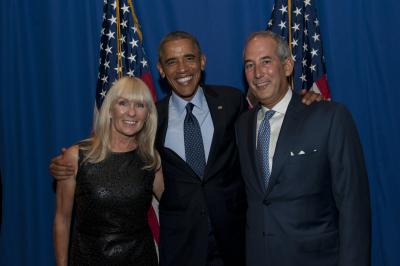Major events that occur in the physical world like Hurricane Sandy often remind me of how far we have come as a society in the great analog-to-digital conversion of our times. While weather forecasting and a significant amount of civil preparedness and communication rely on the internet the devastating impact of the storm is a tragic reminder that we still largely inhabit an analog world. Two Sandy stories in particular caught my attention.
First the New York Stock Exchange led so ably by Duncan Neiderauer made heroic efforts to reopen its equity trading floor on the third-day of the storm while much of New York City including the schools remained closed. This would simply be another noble story of recovery were it not for the fact that a majority of equity trading has long since moved to electronic trading systems including those operated by the NYSE itself. This raises the obvious question of whether physical threats such as more frequent “once a century” weather events and the ever present risk of terrorist action should not accelerate the transition to all-electronic trading which can be made resilient through remote disaster back-up systems.
The other Sandy story came from a close friend who visited a local New York bookstore a couple of days after the storm. He told me how shocked he was to see the store security guard eject a polite woman who asked to charge her mobile phone via one of the store’s electrical outlets. In fact my friend was so surprised at this lack of community spirit at a time when so many were without power that he questioned the store manager. The latter simply stated that it was “corporate policy” of the national chain to which the store belonged.
I cite this last example not simply to highlight how insensitive some businesses can be but also how misguided bricks and mortar retailers can be in formulating a winning strategy in the face of the Amazon digital onslaught. One of the few advantages such real world retailers still possess is that they actually inhabit the real world. Far from shunning potential or perhaps existing customers in need during a time of crisis these stores should be setting up free charging stations to help members of the community. This particular book selling chain (and there are very few remaining) had previously recognized the benefit of encouraging potential shoppers to spend more time in their stores by installing Starbucks branches in its larger units.
So what do these two Sandy stories have in common? In the NYSE case we see an example of an institution clinging to an analog model when completing the transition to digital would reduce cost and improve reliability. In the book seller case we see a large corporation that failed to use the physical presence it possessed to compete on service with online retailers which had every other advantage. Strategy consists of accurately assessing your relative strengths and weaknesses and then acting upon them in the face of external events. With climate change likely to increase the variability of weather events we should all consider and regularly adjust our analog to digital strategies.





